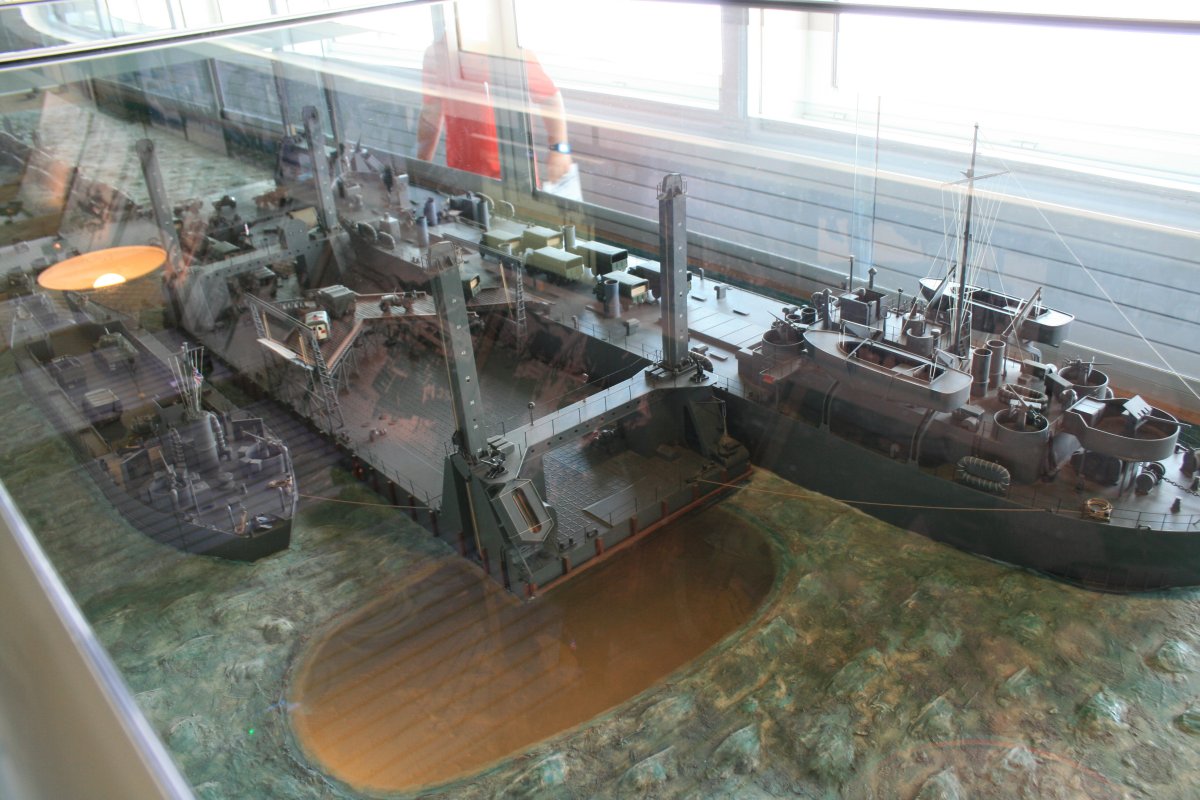France June 2016 - Arromanches, Normandy
|
|
The Allies did not land on the little beach at Arromanches. Americans landed at Omaha Beach to the west and British at Gold Beach to the east. But Arromanches figured heavily in the Normandy campaign because one of the two gigantic Mulbery artificial harbors was placed here.
We parked our car up in the visitor's parking lot on top of the bluff.
|
| |
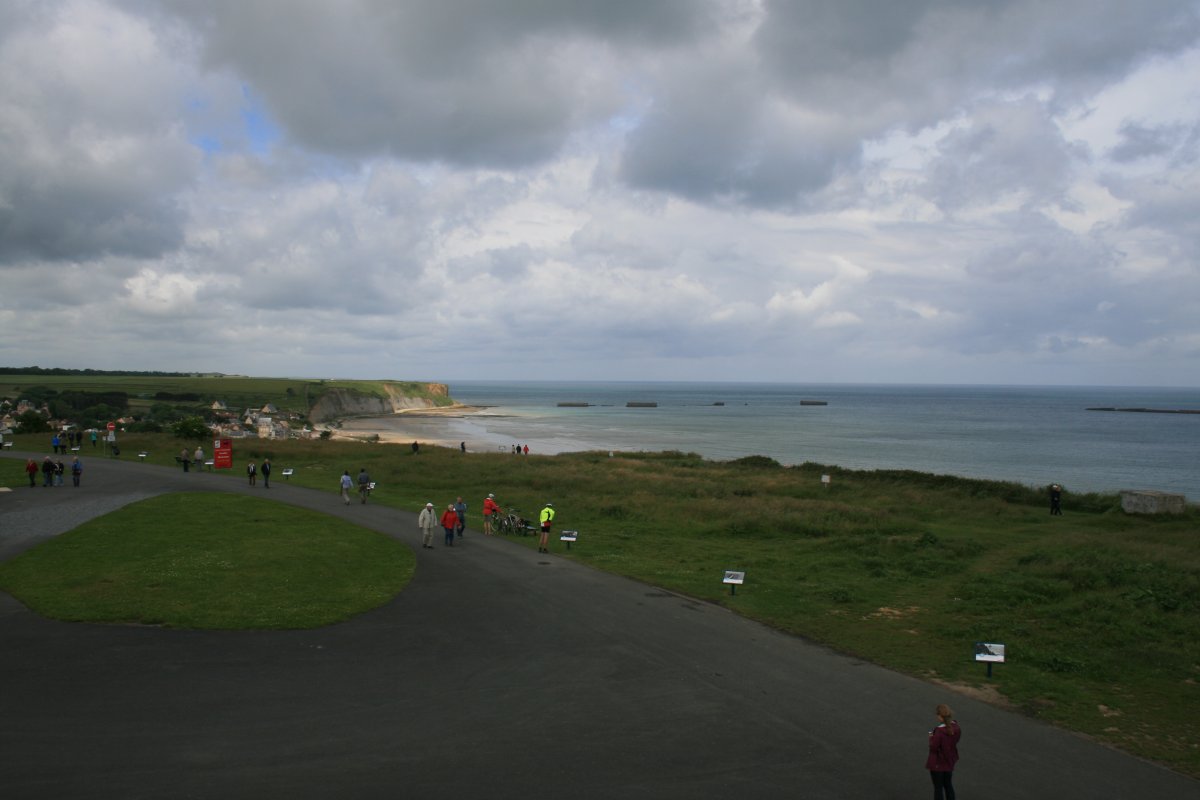 |
|
|
Looking east where the British 5th Infantry Division came ashore at Gold Beach. Notice how flat the area behind the beach is compared to Omaha Beach.
|
| |
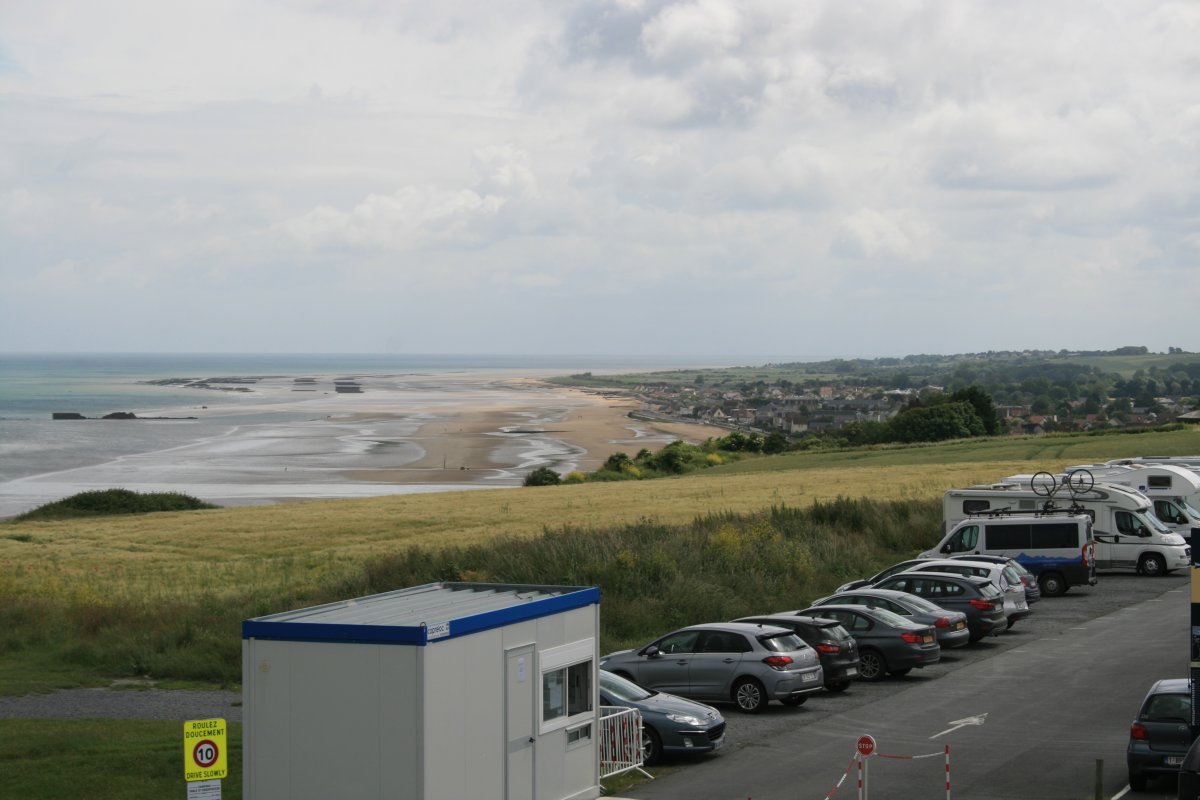 |
|
| Checking out the Sherman Tank before descending down to the beach. |
| |
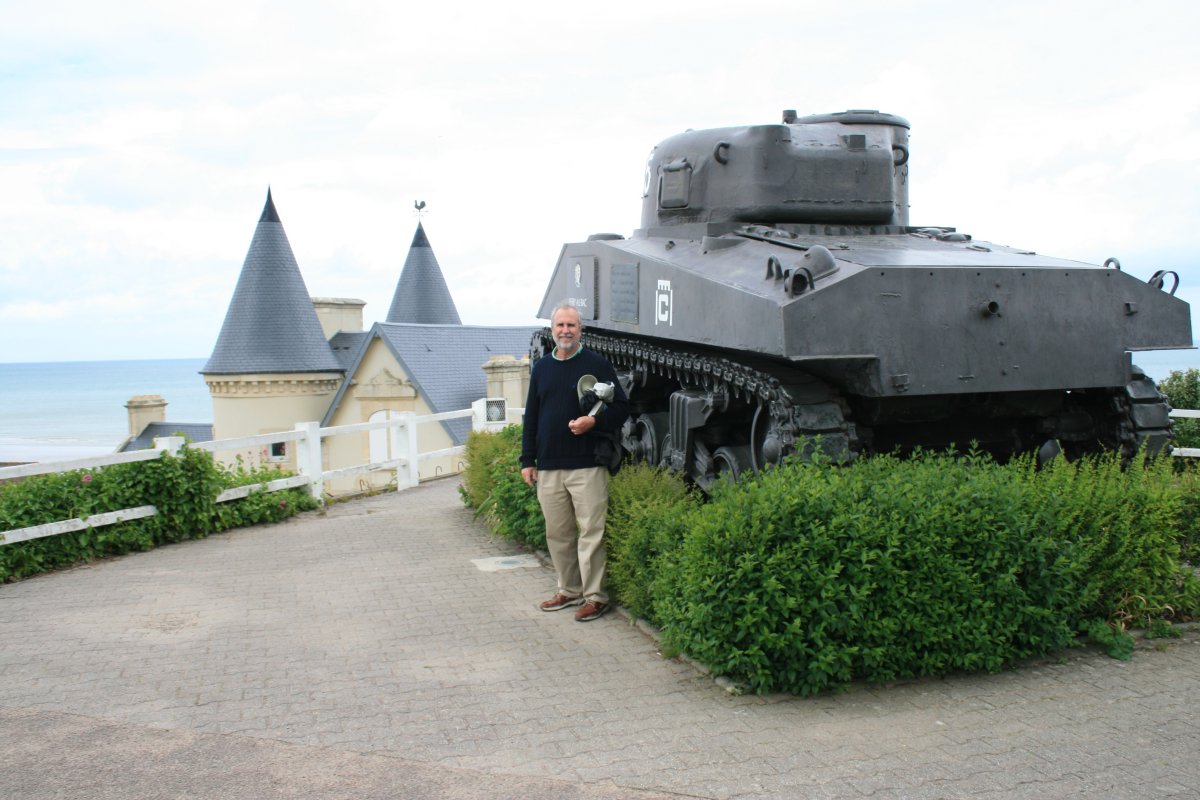 |
|
|
A remnant of the Mulbery artificial harbor buried in the sand at Arromanches.
The Mulberry harbours were to be used until major French and Belgium ports could be captured and brought back into use after repair of the inevitable sabotage by German defenders. The Germans were quite good at destroying ports by this stage of the war. The port nearest the D-Day beaches was Cherbourg. It was captured towards the end of July 1944 but the port facilities there had been expertly wrecked, then booby-trapped. Although Antwerp in Belgium was captured on 4 September 1944, the Port of Antwerp was not opened until 28 November as the approaches to the port were held by the Germans until the (delayed) Battle of the Scheldt was won.
|
| |
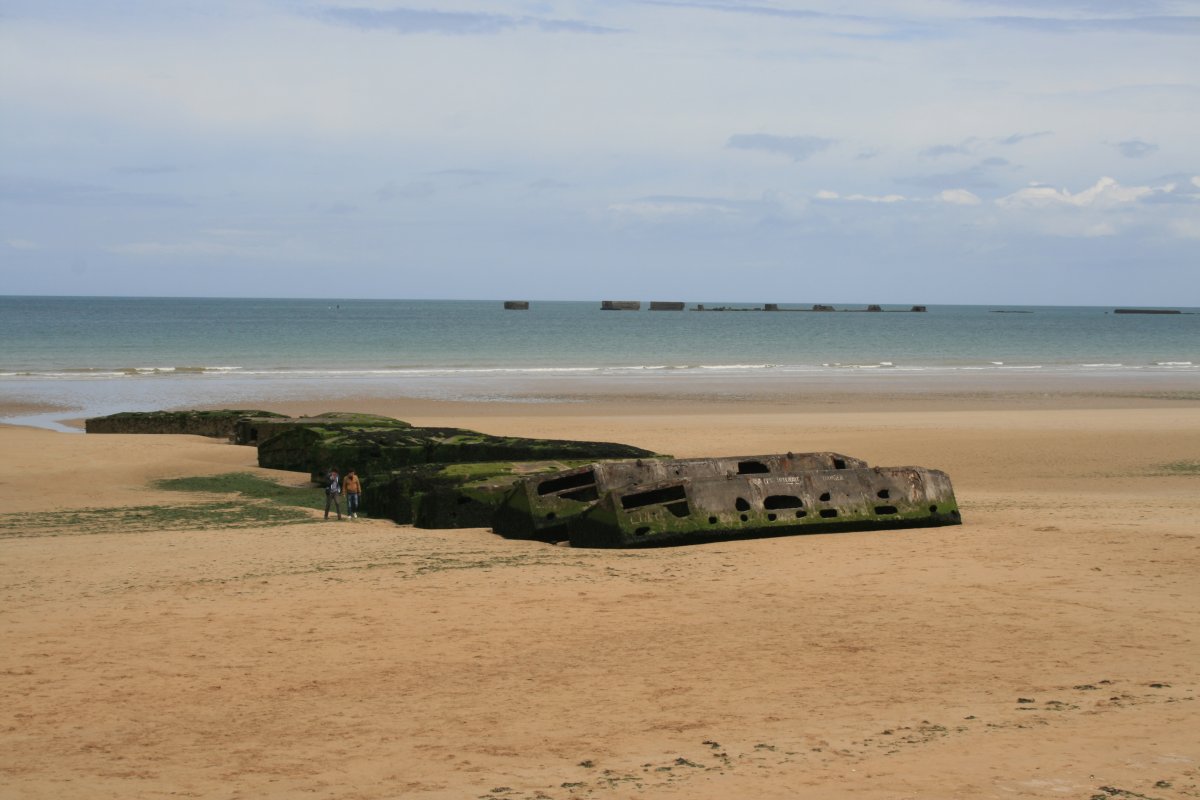 |
|
| The artificial harbour at Arromanches was used for 10 months after D-Day and over 2.5 million men, 500,000 vehicles, and 4 million tons of supplies were landed before it was fully decommissioned. |
| |
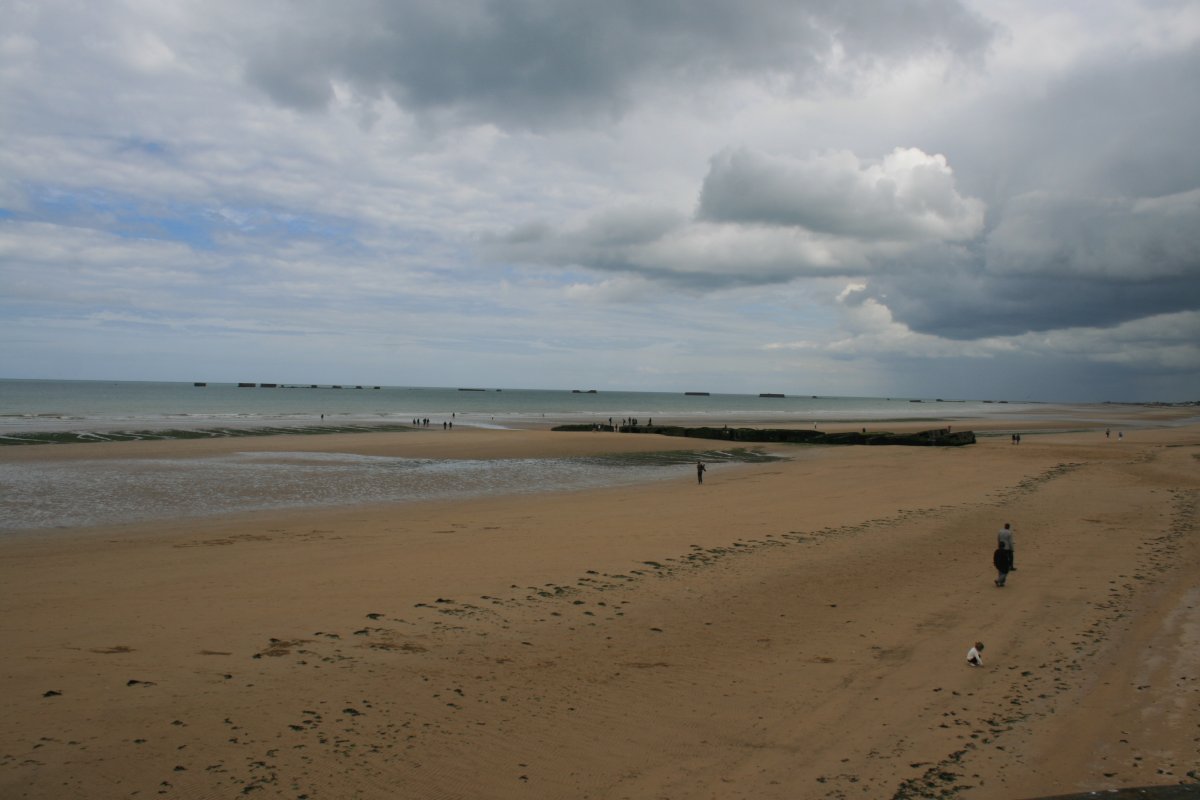 |
|
|
How it looked back in the summer of 1944. Looking west. It truly is an artifiical part.
Surprisingly, even though the Omaha Beach Mulbery was mostly destroyed in a bad storm only weeks after D-Day, Americans were able to unload a higher tonnage of supplies there than at Arromanches. They did it by offloading Landing Ship Tanks (LSTs) directly on the beach. Salvageable parts of the Omaha Beach Mulbery were sent to Arromanches to repair the Mulberry there.
|
| |
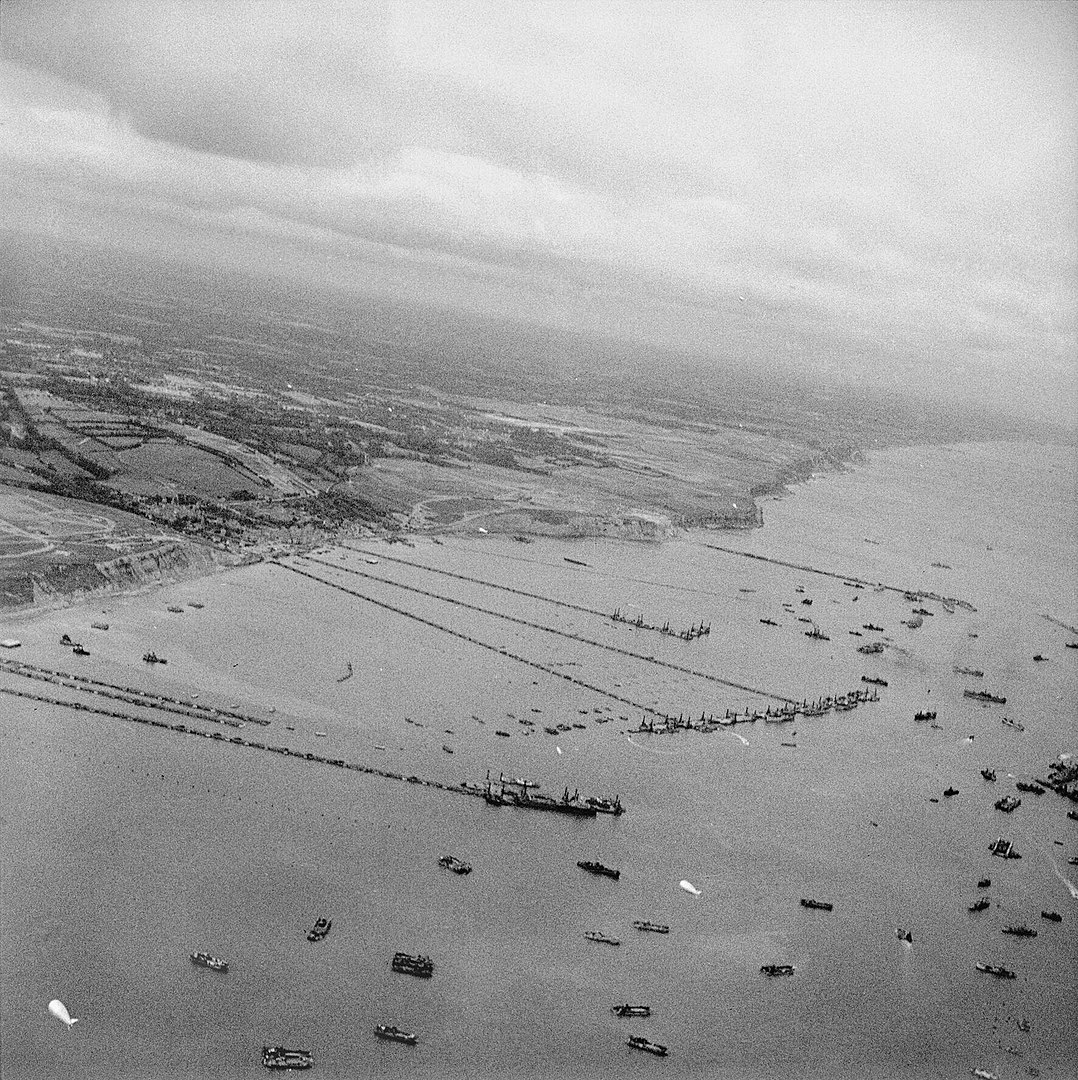 |
|
| More Mulbery remnants can be seen out in the ocean. |
| |
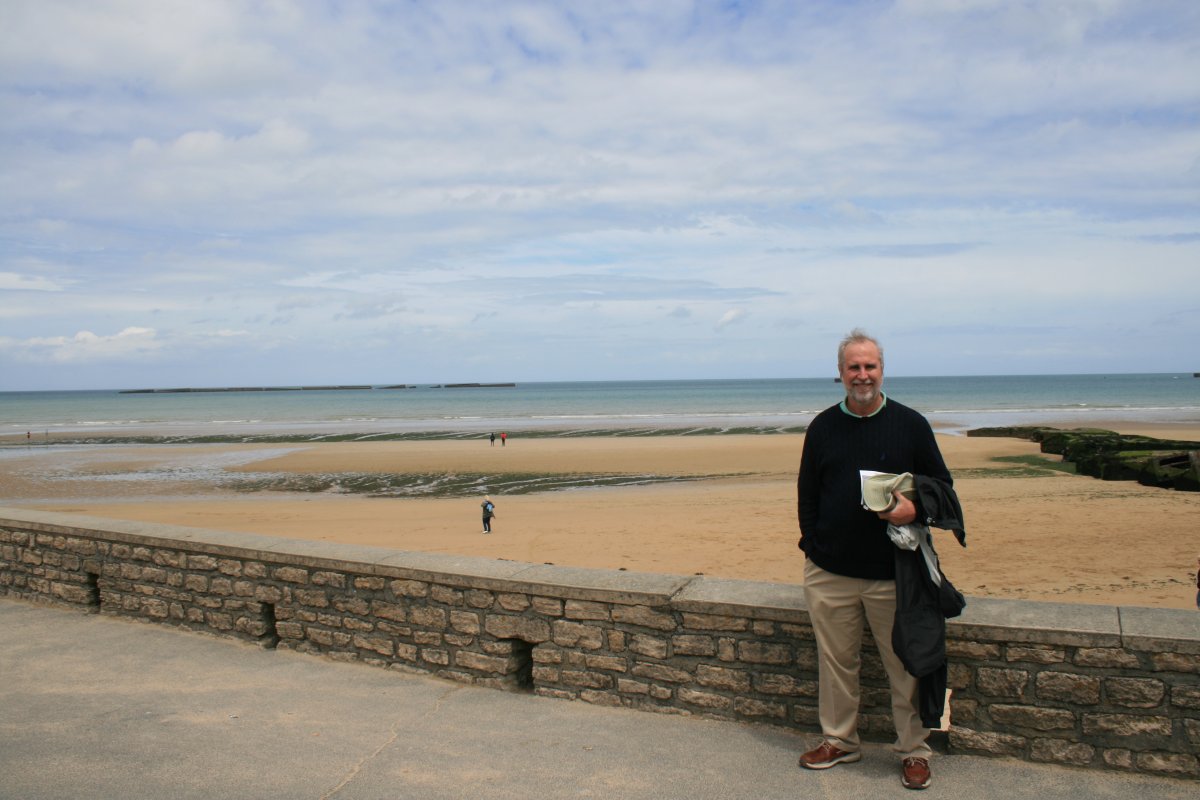 |
|
| Lynnette enjoying sitting on the French beach boardwalk. |
| |
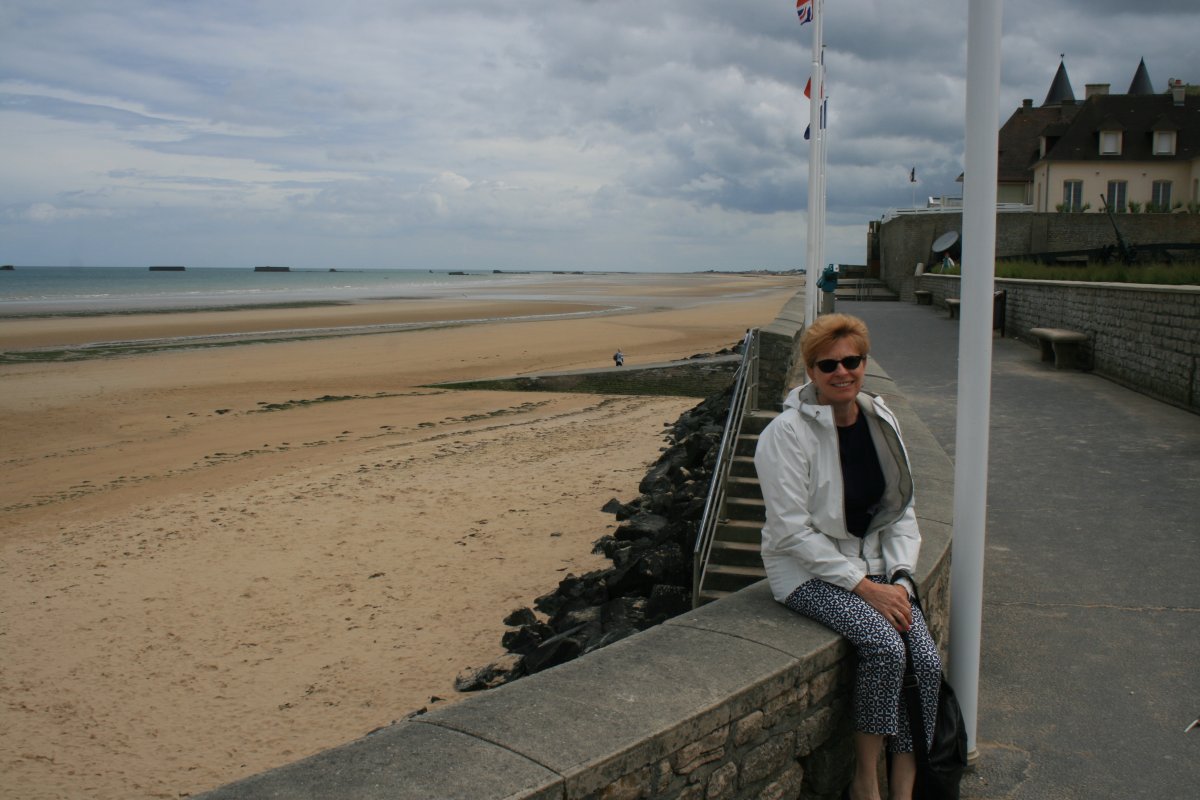 |
|
|
This beached remnant is massive compared to the guy standing next to it.
|
| |
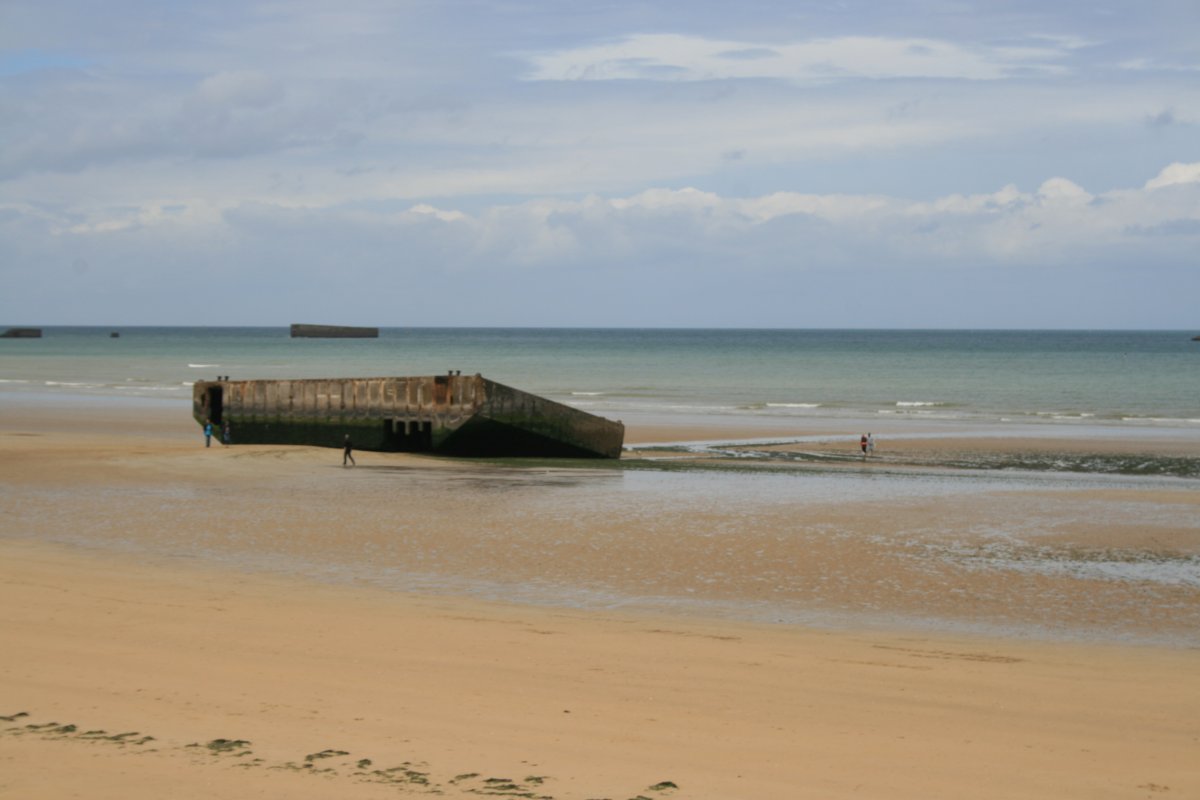 |
|
| |
| |
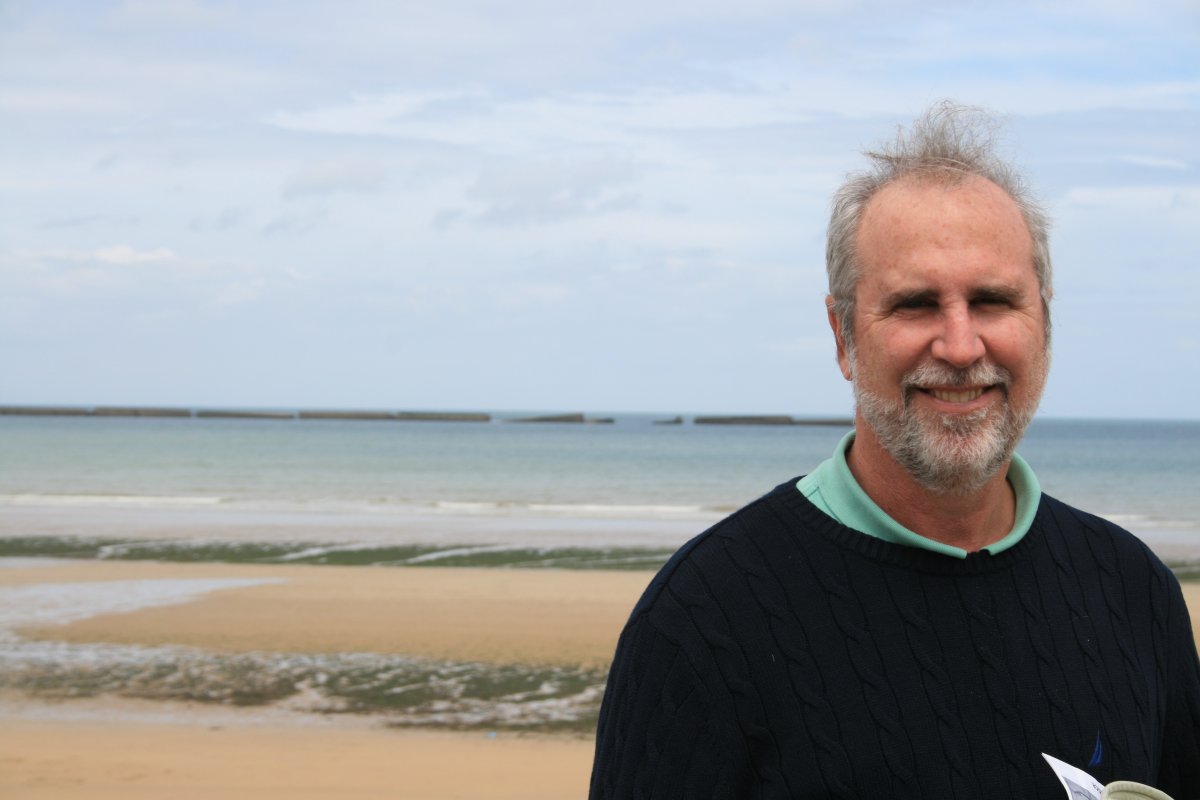 |
|
|
A Mulbery component on display. This was a piece of the floating roadway, codenamed "Whale". Notice the vehicle on top.
|
| |
 |
|
| Here are two of the Whales connected together. |
| |
 |
|
|
Just off the beach was the Musée du Débarquement, which was mostly dedicated to the Mulbery artificial harbor. They had dioramas of the Mulbery which I loved. For the first time I could understand how the thing looked and worked.
Here is a not very good picture of a diorama of the entire Mulbery artificial harbor system. Notice the Phoenix caissons and Gooseberry blockships that formed the artificial harbor outer breakwater. Inside, the Spuds piers and Whale roadways allowed ships to offload directly onto trucks which then drove to the beach.
|
| |
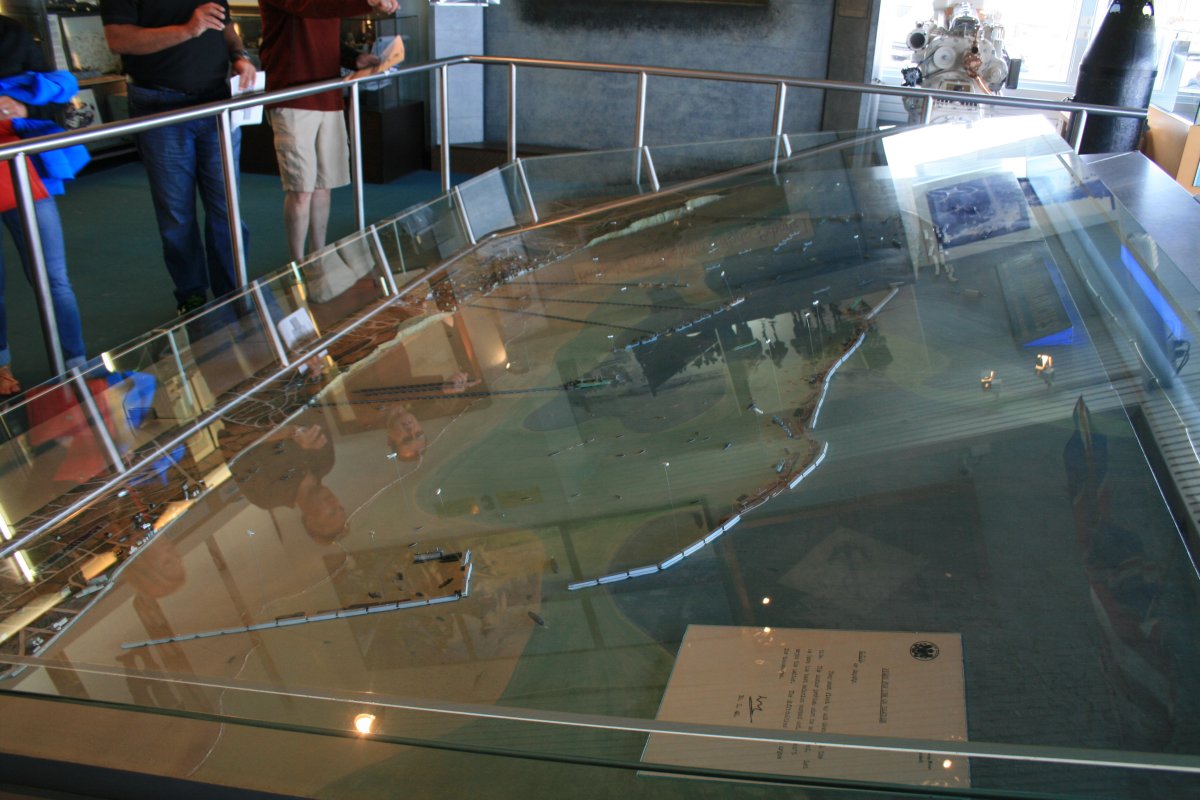 |
|
|
The museum had larger-scale dioramas which were very effective in allowing you to see how the system worked.
This picture shows the pier heads or landing wharves -- called "Spud Piers" -- at which ships were unloaded. A Spuds Pier consisted of a pontoon with four legs that rested on the sea bed to anchor the pontoon, yet allowed it to float up and down freely with the tide. Ships were unloaded onto trucks at the Spuds Pier. The trucks then drove to shore on the Whale roadway.
|
| |
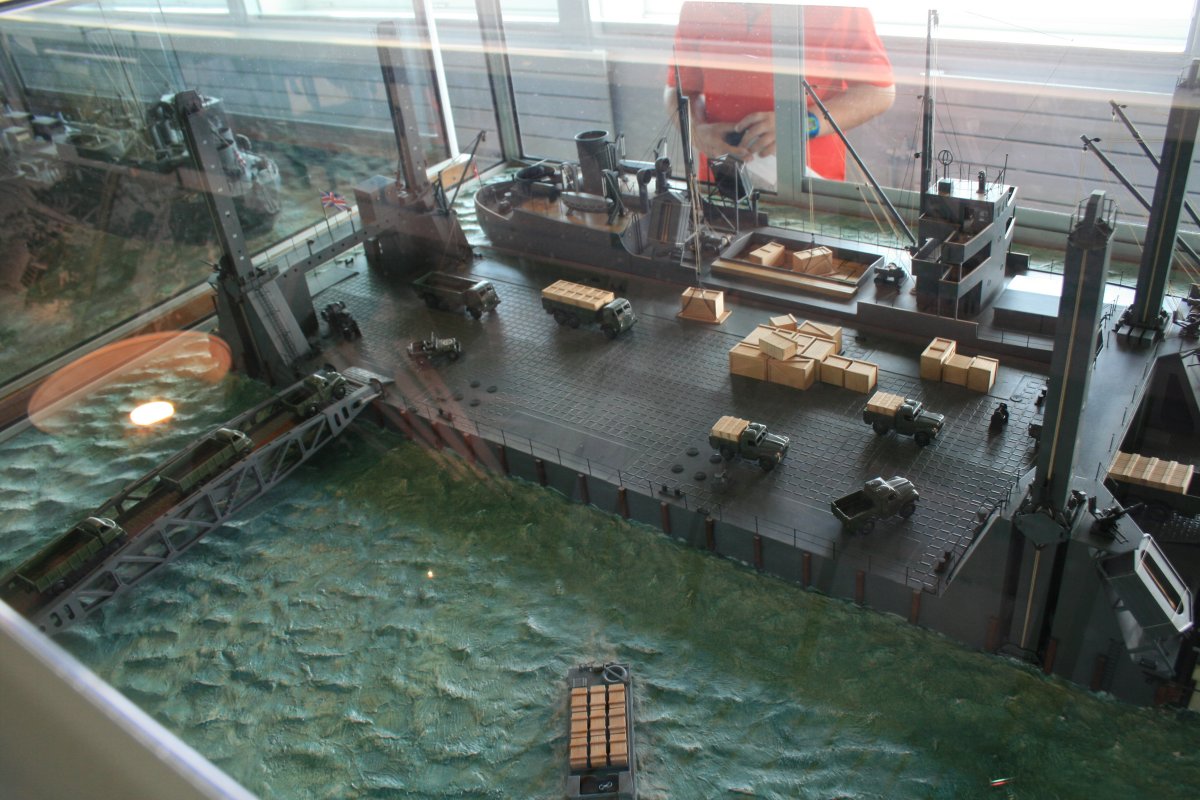 |
|
|
A Spuds Pier from another angle.
|
| |
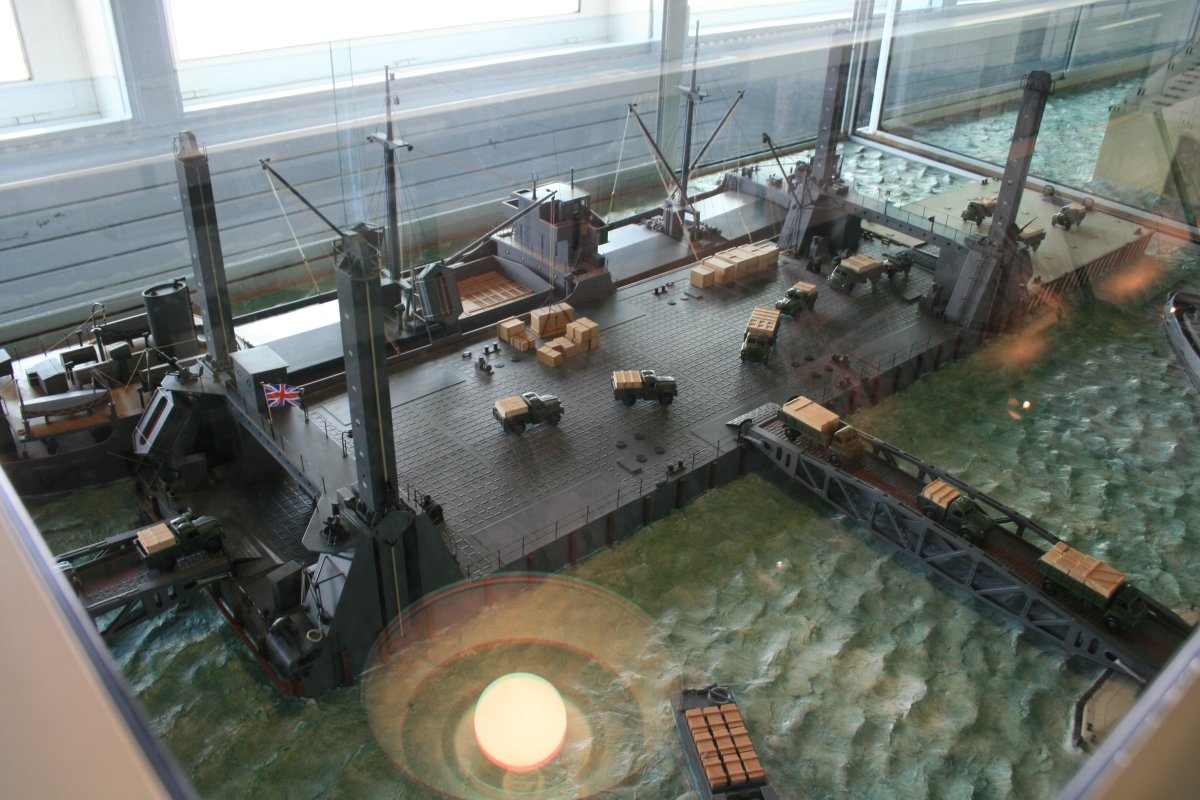 |
|
| Trucks driving off the Whale roadway onto the beach. |
| |
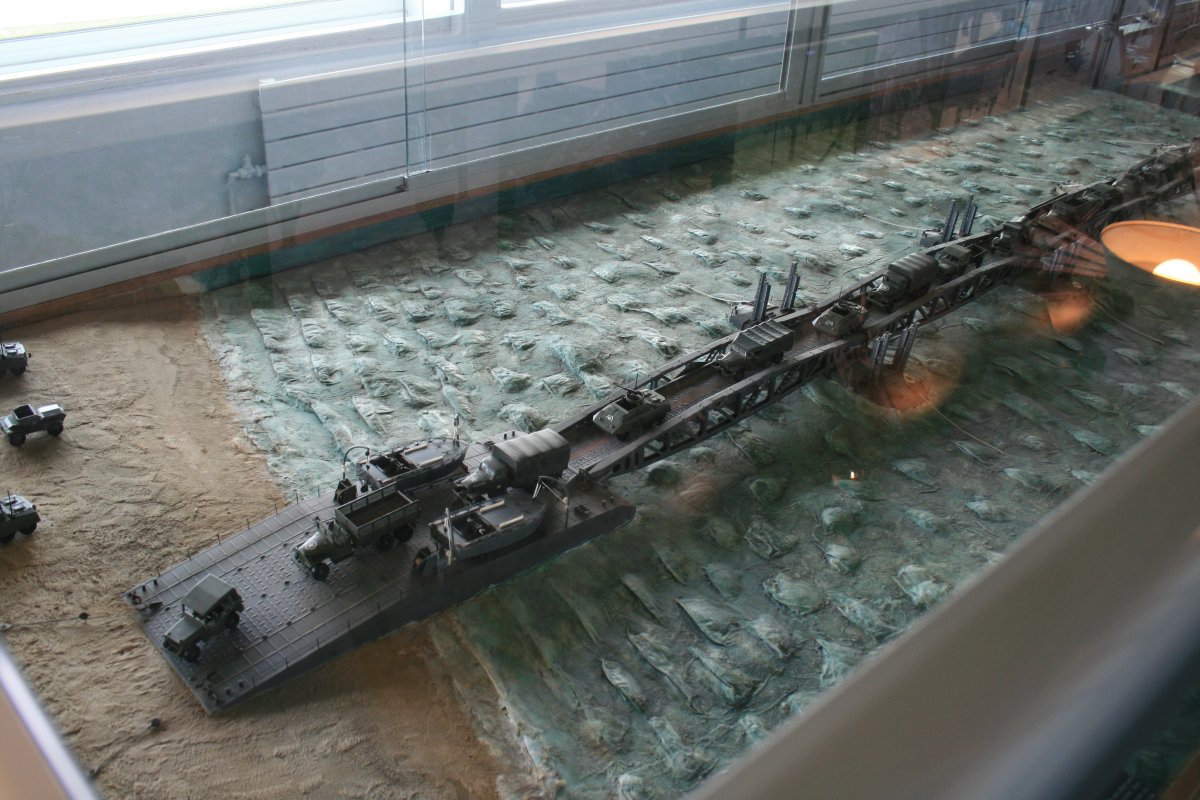 |
|
|
LST's could offload vehicles directly onto the Spuds Piers using specially-designed floating ramps pictured in his diorama.
|
| |
 |
|
|
In this diorama you can see how the floating Spuds Piers worked. See how the legs go all the way to the ocean bottom.
|
| A string of Whales being towed across the English Channels shortly after D-Day. |
| |
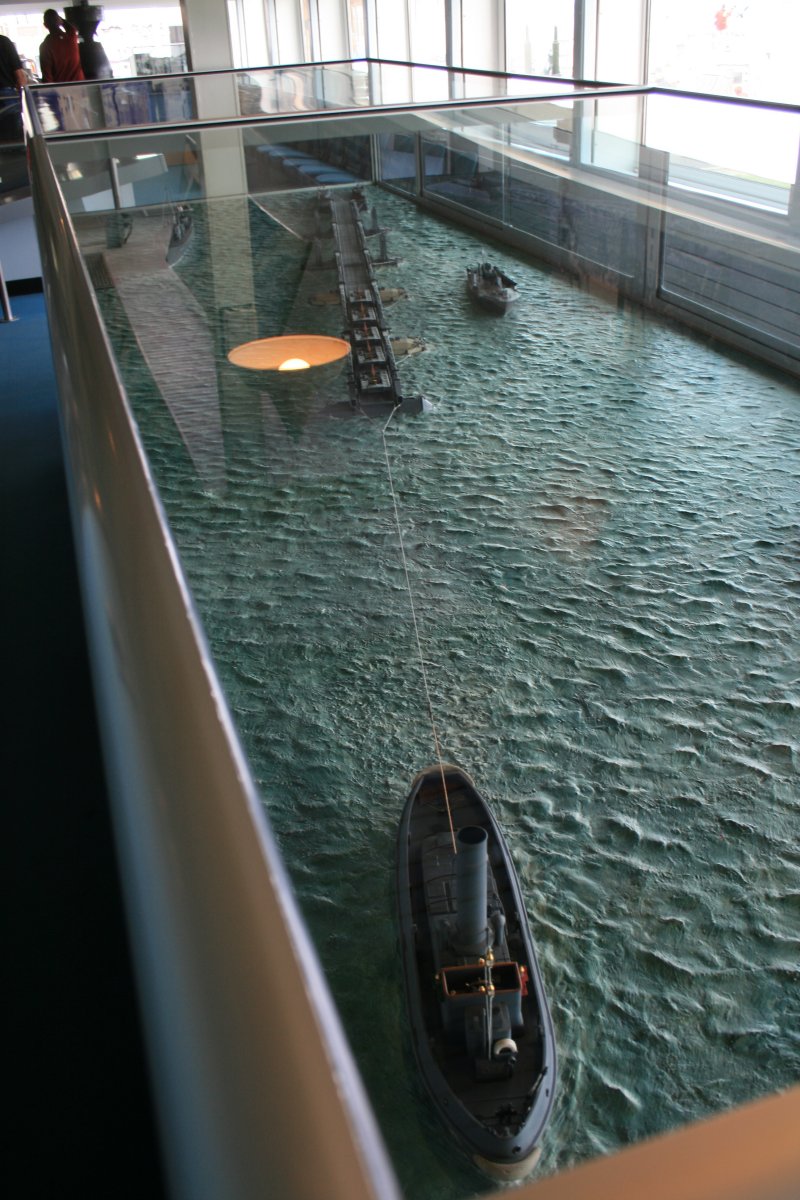 |
|
|
Looking from the other end. In this picture you can see the pontoons or "Beetles" on each side of two connected Whales and supported them.
|
| |
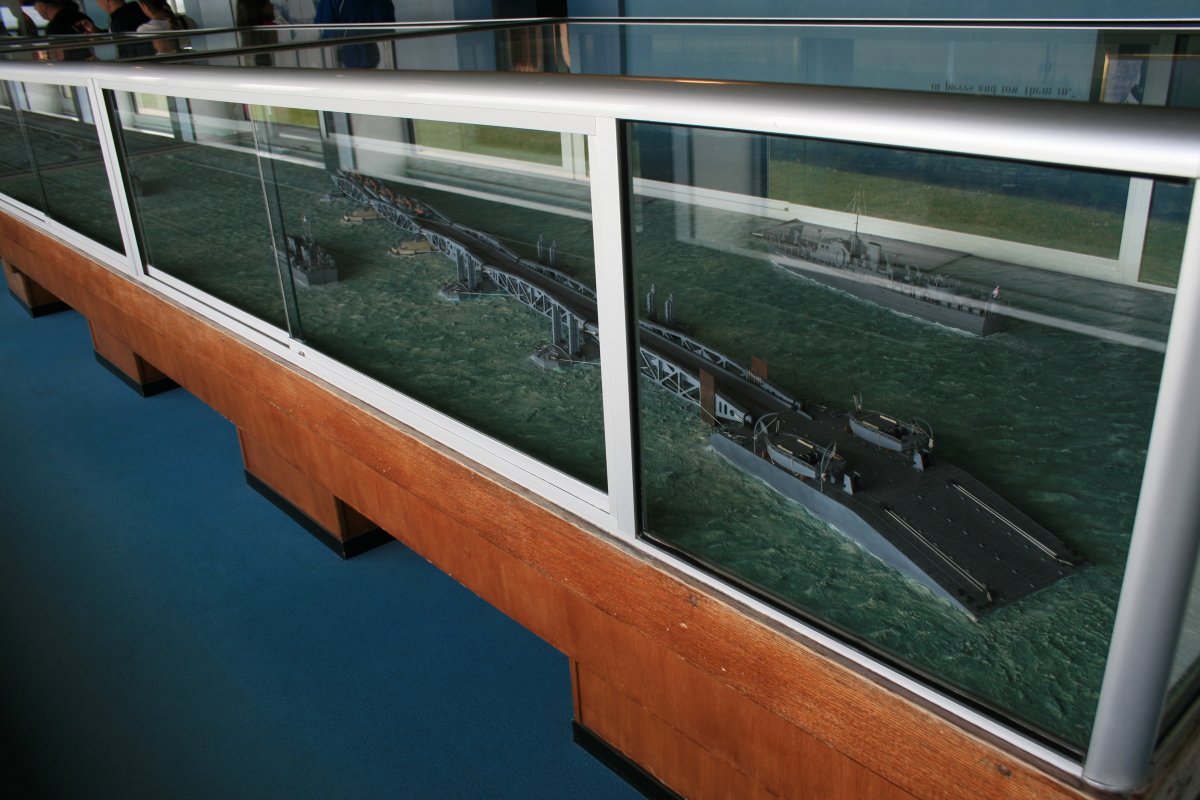 |
|
| A reinforced concrete caisson, codenamed "Phoenix". They were towed across the channel and sunk to form the "Mulberry" harbour breakwaters together with the "Gooseberry" block ships. |
| |
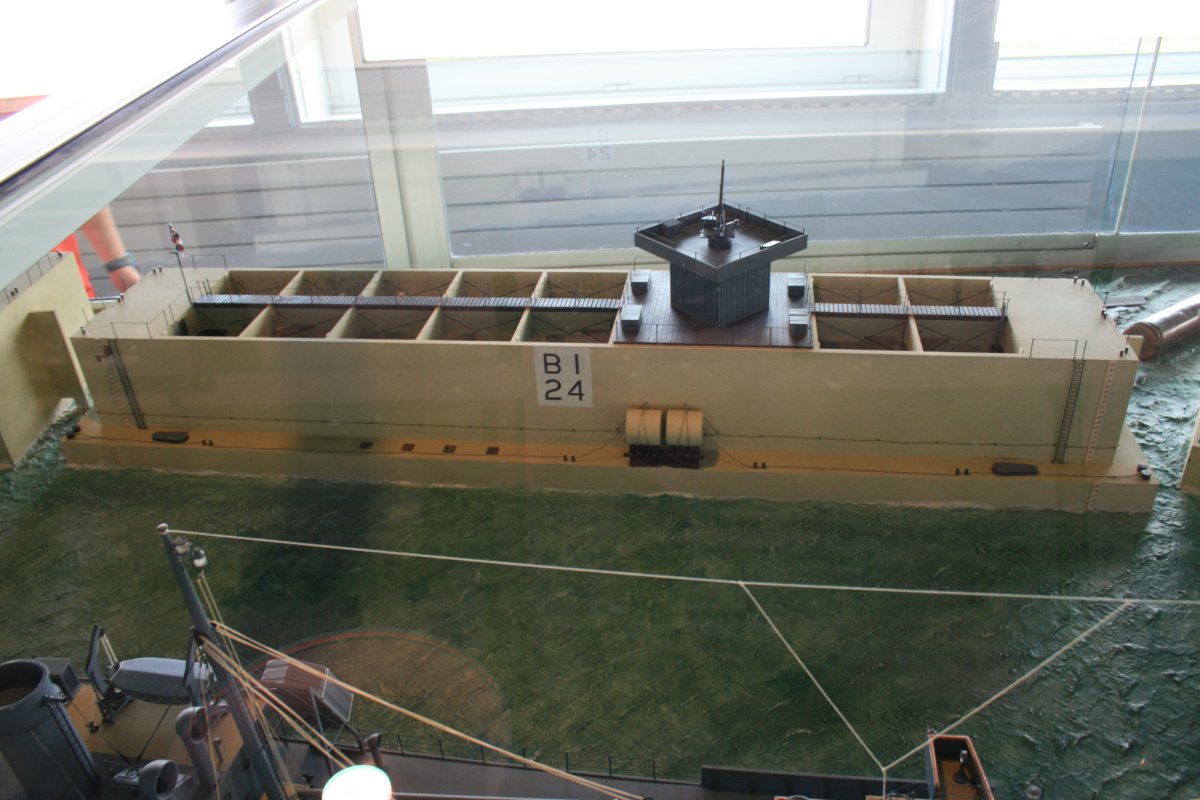 |
|
|
Over at Omaha Beach, after its Mulbery was destroyed in a late June storm, ships unloaded directly on the beach.
Because logistics played a big a part as anything in winning the Second World War, Arromanches and this museum is a must see on any trip to Normandy.
|
| |
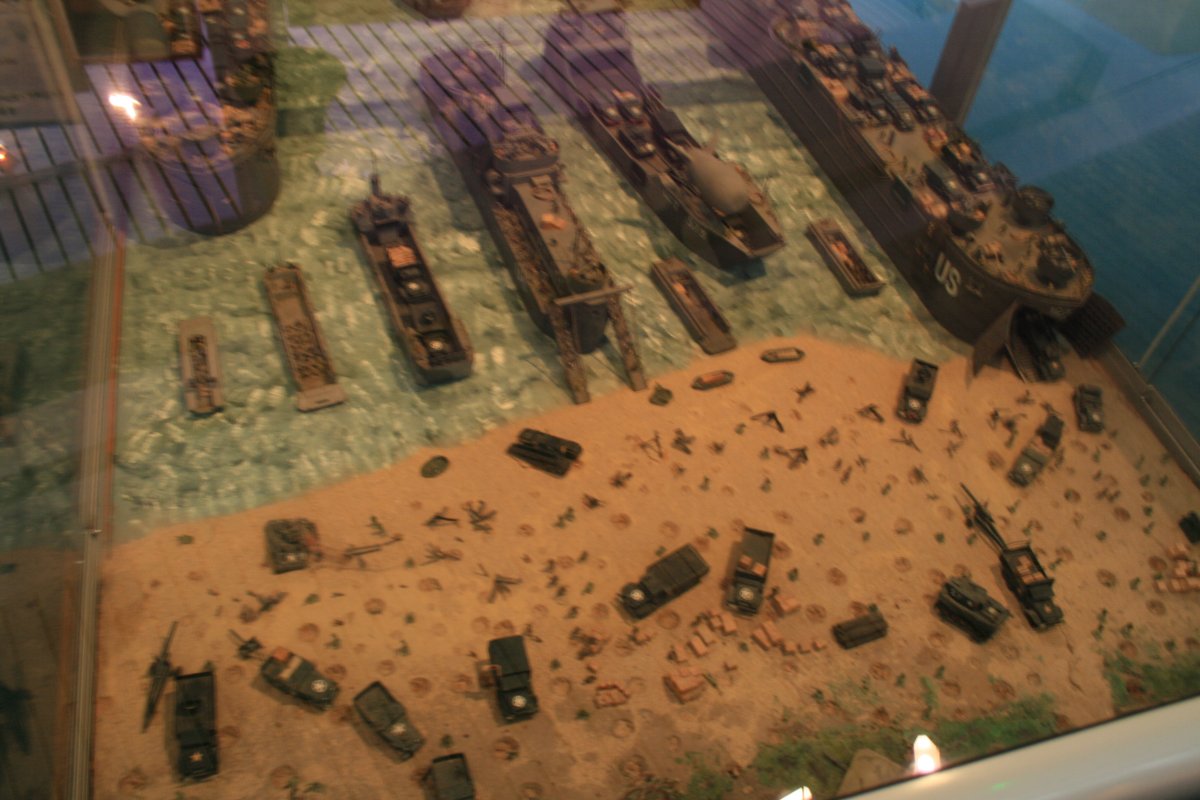 |
|
| |
| |
|
|
|
|
|
|

















